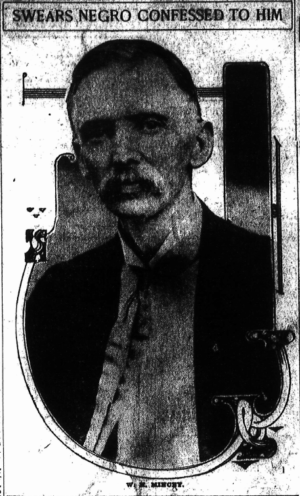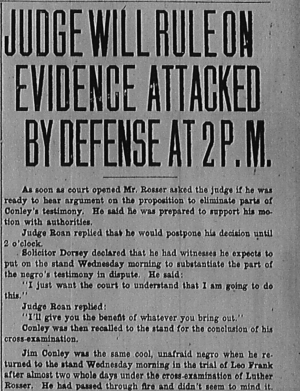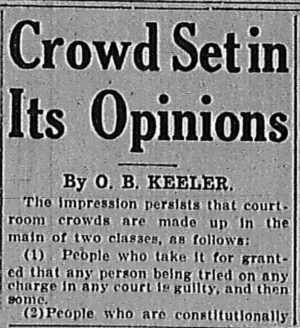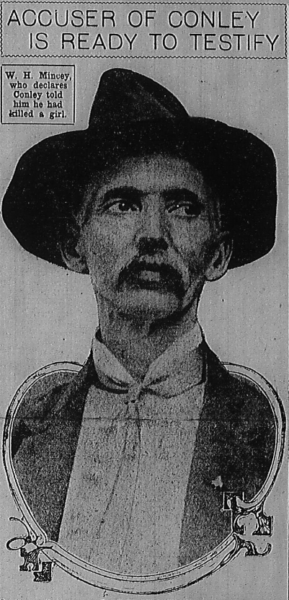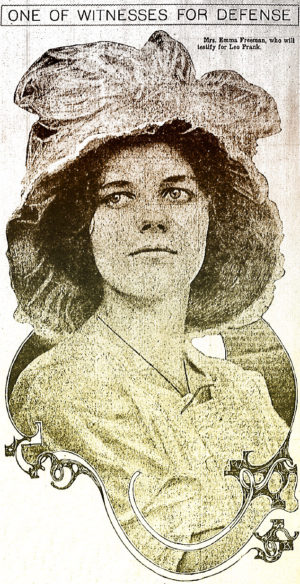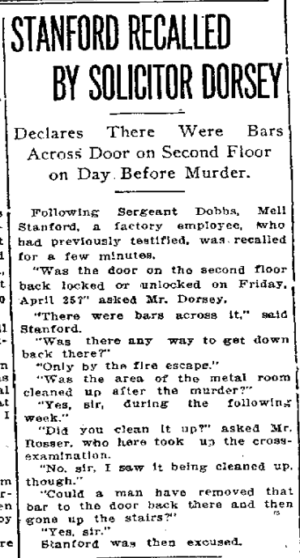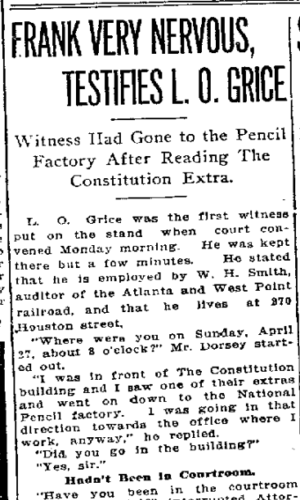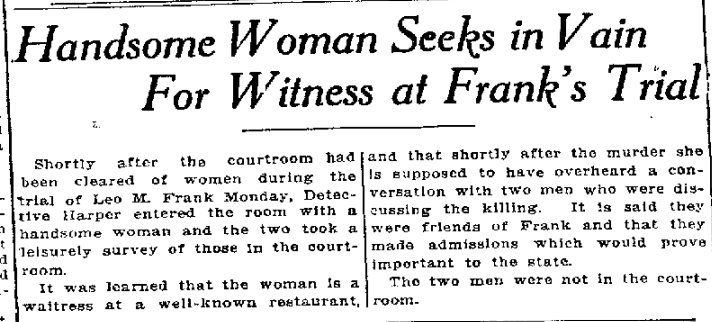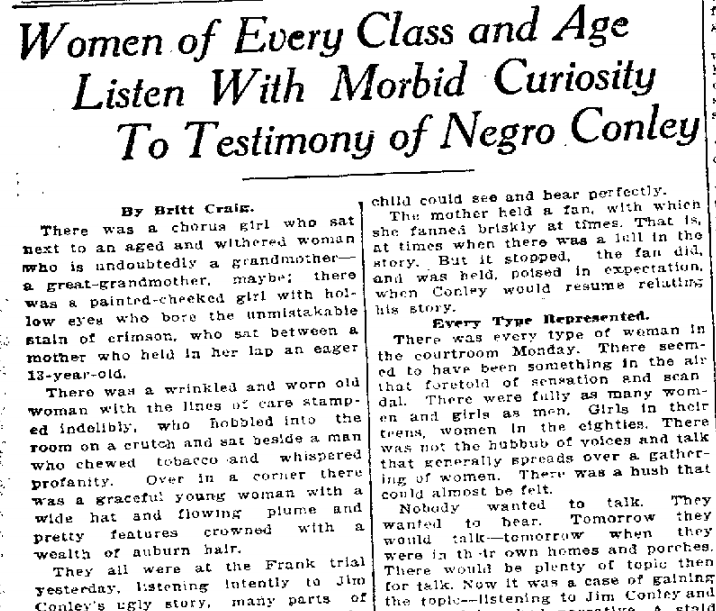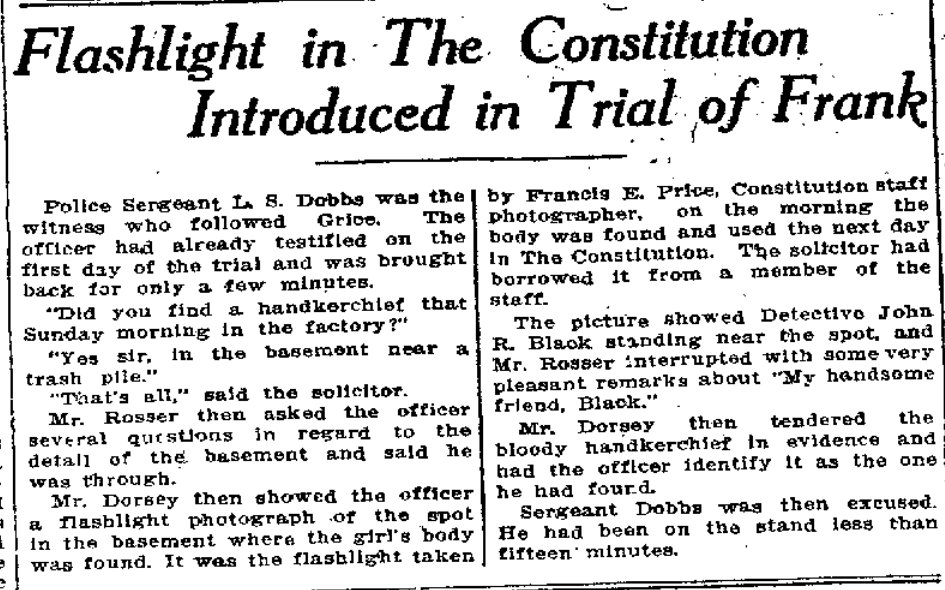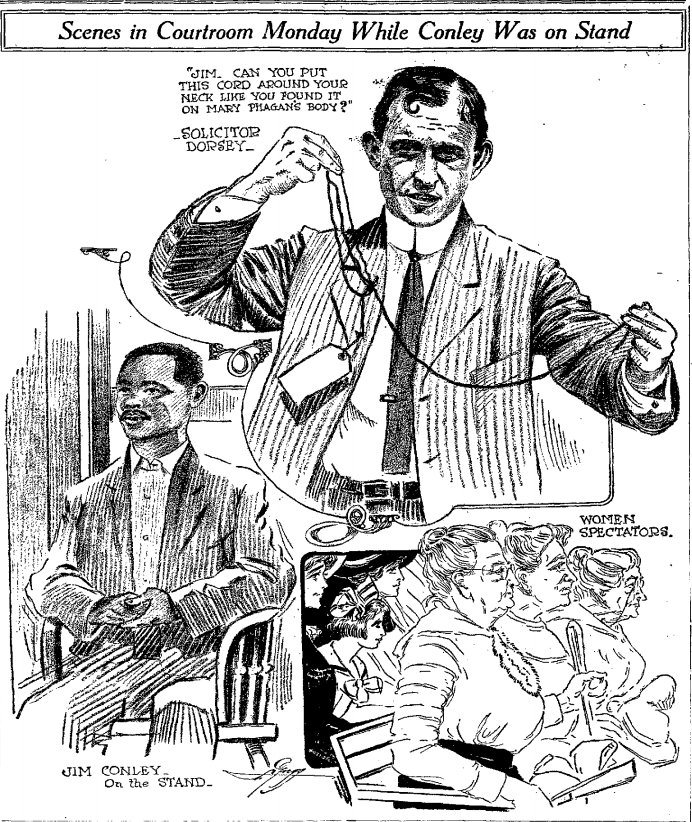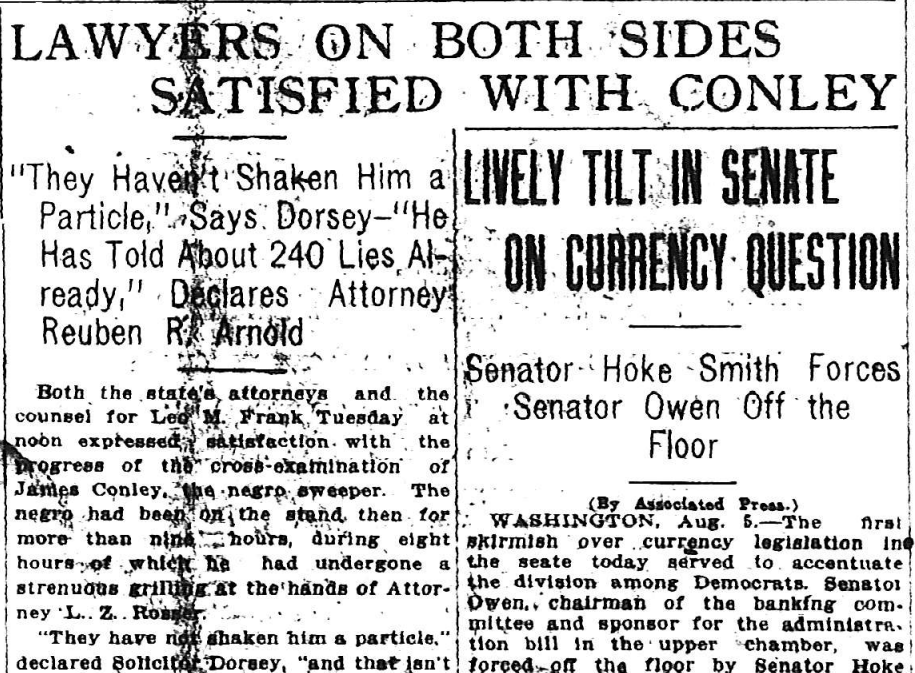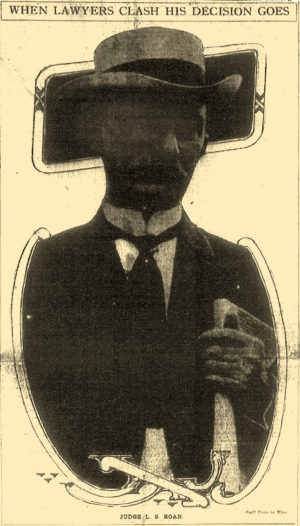Another in our series of new transcriptions of contemporary articles on the Leo Frank case.
Atlanta Journal
August 6th, 1913
Conley’s Whole Testimony Will Be Allowed to Stay in Record of Frank Case
State Ready With Corroborating Witnesses, if Evidence Is Held to Be Admissible—Jim Conley Adds New and Sensational Feature to His Testimony, Declaring He Saw Frank Place Mary Phagan’s Pocketbook in the Factory Safe
SOLICITOR DORSEY APPLAUDED IN COURT WHEN SUSTAINED BY RECORDS AFTER DISPUTE WITH ROSSER
Those Responsible for Applause Were Immediately Ejected From the Court Room—Dr. H. F. Harris Expected to Resume Stand During Afternoon—State Will Furnish Presentation of Its Case by Thursday but Hardly Before
Judge L. S. Roan, presiding at the trial of Leo M. Frank, superintendent of the National Pencil factory, who is on trial charged with the murder of Mary Phagan, Wednesday afternoon reversed himself in his ruling made Tuesday striking out portions of Jim Conley’s testimony. The judge made his ruling Tuesday but withheld announcing it to the jury until Wednesday. His reversal means that Conley’s testimony that he acted in the capacity of a “lookout” for the accused superintendent on days prior to the day of the tragedy, and also his testimony accusing Frank of perversion remains in the testimony. It also means that Solicitor Dorsey will be allowed to present evidence corroborating the negro sweeper as to Frank’s attitude toward him and his conduct to the negro’s presence.
CONLEY ADDS NEW SENSATION.
Jim Conley, who left the witness stand at 11:10, after sixteen hours of direct and cross examination, added sensational feature to his testimony Wednesday by the declaration that he saw Frank take the mesh bag or pocket book carried by Mary Phagan from the desk in his office and placed it in the safe. So far as the public knows the mesh bag has never been found.
Over the protest of the attorneys for the defense, Solicitor Dorsey managed to get before the jury that Frank had refused to face his accuser, Jim Conley, when the detectives sought to arrange an interview at the tower.
For the first time since the trial has been in progress applause broke out in the court room when Solicitor Dorsey after a dispute with counsel for the defense over testimony given by Detective Scott, was sustained by the reading of the court stenographic notes. Dorsey had contended that Scott testified that Frank told him on April 28th about Mrs. White’s having seen a negro near the foot of the stairs on the day of the tragedy. Although the defendant had given this information to the Pinkerton detectives on April 28 declared the solicitor, it was May 7 before the state’s detectives knew about it. When the stenographer’s report of Scott’s testimony was read, sustaining the solicitor, applause broke forth in several parts of the court room at once. Those responsible for it were immediately ejected by the deputie [sic].
Dr. H. F. Harris is expected to take the stand Wednesday afternoon and finish his testimony. He will probably be under cross-examination for an hour or more. The state expects to finish the presentation of its case Thursday.
Continue Reading →
